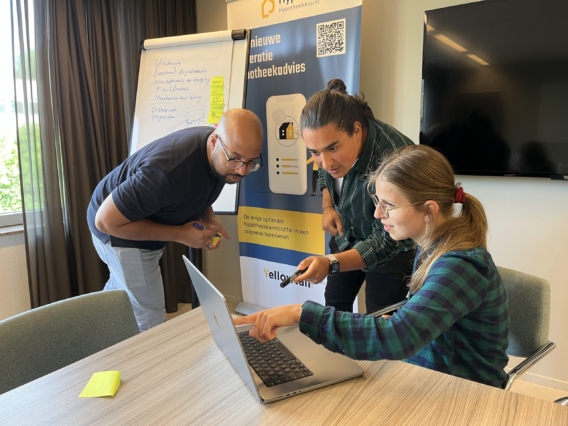In this, for the time being, last part of the series “Towards a modern financial accountability function”, we share our thoughts on new technological possibilities including data-driven audits and continuous monitoring. Technology that can also help your organization in relation to internal control and accountability functions – if it is applied correctly.
A huge efficiency boost
Data-driven technologies are used in various sectors and in many areas. The most frequently heard terms are data science, data-driven, artificial intelligence and machine learning. These technologies have many advantages and can help almost every organization, from small businesses to large ministries, to innovate and especially to achieve a certain degree of efficiency. Applying this technology can therefore result in a huge efficiency boost for the accountability function. To help your organization, the Key Control Dashboard is currently developing the next generation of data-driven audits. A process in which we would like to actively involve our customers. Data-driven audits will offer your organization the opportunity to spend less time on accountability and more time on actual management and control.
Data-driven audits in practice
Data-driven technology enables us to retrieve data from large amounts of information and data from various sources and use it to make decisions. Artificial intelligence and machine learning can then use this data to make independent decisions, draw conclusions or learn. The continuous monitoring principle is applied to perform data-driven audits, whereby information is retrieved and analysed in real time. This means that you always have an up-to-date view of the situation and know whether your organisation is In Control of a standard or not.
The use of data analysis to perform audits more effectively and efficiently is becoming increasingly common, for both internal and external auditors. The use of data analysis within the accountability function is generally focused on analysing daily activities in the organisation, such as transactions and controls. In order to achieve effective and efficient accountability, much development is still needed in the application of data analysis in all activities of an organisation. This includes the application of data analysis in the field of risk assessment, cyber, control testing, benchmarking and anti-fraud procedures.
Data-driven audits offer an efficiency advantage in all areas for which an organization must account and make process control and quality management less time-consuming. Data-driven audits automatically compare the current state of affairs with the pre-set standards and report on this. Any discrepancies are demonstrated in real time. This is done by means of freely devisable business rules that can automate almost any control.
Benefits of data-driven auditing
- Faster insight: You have easy access to data and can develop insights by connecting and comparing kpi’s of products, processes and departments. From retrospective insight to continuous monitoring, getting a grip on the situation every day and dealing with incidents immediately.
- Steering for quality:by combining data from inside and outside the organization, you develop better insights and understanding of risks and the qualitative status of a process. From loose lists and incomplete information to quality and real-time insight.
- Real-time monitoring at lower cost: through automated and integrated controls, data-driven audits provide a more focused audit while simultaneously testing 100 percent of the population. From sampling to testing the entire population or real-time monitoring. From spending time performing accountability, to time to manage and work on process improvement. All at a lower cost, too.
- Innovation becomes a strategic factor: by using data science methods and a new generation of techniques, improve and automate the audit process, reporting and service delivery in general.
On the road to acceleration
The adoption of new data-driven techniques is still in its infancy in many ministries and other government organizations. But if we’re talking about what trends are really going to provide the acceleration in modernizing the accountability function, it’s these techniques. An accountability function from a ‘continuous monitoring thought’ where you have real-time insight into the current In Control status of your process control.
This concludes our series ‘Towards a modern financial accountability function’ at ministries and government. I hope you have learned something from this series. And above all that it has inspired you!
More information?
In this series, Edwin Lodder discusses the latest developments in this field at ministries and government, which are faced with the task of modernizing their accountability function. Based on a tour of the fields, Edwin lists the six most important developments within this new dynamic. We are happy to help take the first steps towards a modern accountability function. Let us know!



















